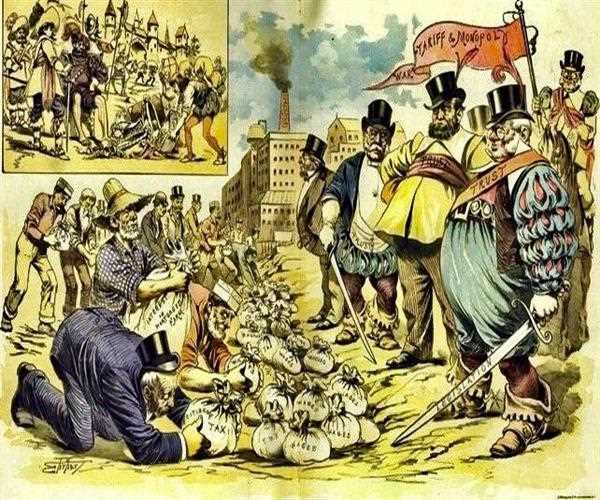An Overview: Guilded Age:
Gilded Age, was a period of gross materialism and blatant political corruption in U.S. history during the 1870s that gave rise to important novels of social and political criticism. The period takes its name from the earliest of these, The Gilded Age (1873), written by Mark Twain in collaboration with Charles Dudley Warner. The novel gives a vivid and accurate description of Washington, D.C., and is peopled with caricatures of many leading figures of the day, including greedy industrialists and corrupt politicians.

Also read: What is the business/government ideology of the Gilded Age?
The great burst of industrial activity and corporate growth that characterized the Gilded Age was presided over by a collection of colorful and energetic entrepreneurs who became known alternatively as “captains of industry” and “robber barons.” They grew rich through the monopolies they created in the steel, petroleum, and transportation industries. Among the best known were John D. Rockefeller, Andrew Carnegie, Cornelius Vanderbilt, Leland Stanford, and J.P. Morgan.
City bosses established virtual dictatorships over their cities, using illegal means to do so. Bosses, however, did make some improvements in city life during the late 1800s and the early 1900s. As industrialization occurred and thousands of Americans moved to cities seeking employment, city governments had tremendous difficulty providing necessary services to the city's residents. City bosses commonly filled that void by having streets cleaned, enforcing laws (at least the ones they chose to enforce), and providing other services. While bosses allowed gambling and prostitution to occur to award their loyal supporters, they also greatly reduced the availability of these items by only allowing a small number of their followers to engage in these activities. The city bosses' advisers and political supporters became known as the 'city machine.'
Also read: Why did urban population increase in the United States during the Gilded Age?